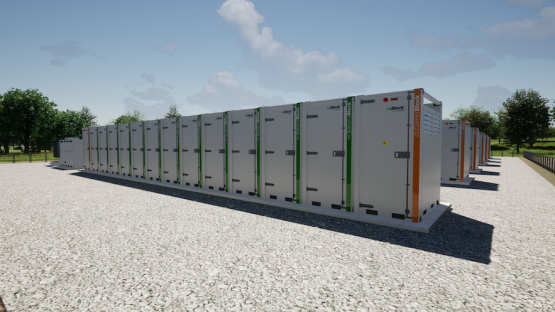On July 27th, Senate Majority Leader Chuck Schumer and Senator Joe Manchin of West Virginia announced a far-reaching reconciliation package that includes roughly $369 billion in spending for renewable energy and climate. The budget reconciliation bill, dubbed “The Inflation Reduction Act of 2022,” notably includes an extension and expansion of both the production tax credit (PTC) and investment tax credit (ITC) for clean energy technologies, including solar, energy storage, wind, geothermal, fuel cells, and microgrid controllers.
The legislation calls for a 10-year extension of the 30% federal ITC on the cost of eligible installed equipment. For energy storage system (ESS) projects specifically, this would apply whether the ESS is co-located with solar or in a standalone application. The bill includes several fundamental changes to how clean energy tax credits are calculated and paid, much of which were initially in the $1.7 trillion Build Back Better reconciliation bill, which died in the Senate late last year. Most notably, the bill includes: (i) a two-tier structure that requires compliance with prevailing wage and apprenticeship requirements, (ii) adders for projects that satisfy domestic content and low-income community requirements, and (iii) a limited direct-pay mechanism where tax credits can be paid as a cash refund. Disclaimer: The following summary of key provisions is based on the bill’s current text, which is subject to amendment and change.
Key Provisions:
- Energy storage. Explicitly states that ESS projects with a minimum capacity of five kWh are ITC eligible. This applies to ESS projects that are co-located with solar or standalone. Microgrid controllers and interconnection property were also explicitly stated as being ITC eligible.
- 10-year extension. Establishes and extends the ITC at 30% through 2032. In 2033, ITC steps down to 26%, and 22% in 2034.
- Prevailing wage and apprenticeship requirements. Based on a two-tier “base rate” (20% of the credit) and “increased rate” (80% of the credit) structure, contractors must utilize laborers paid prevailing wages during construction and for repairs during the applicable tax credit period in order to qualify for the full 30% “increased rate.”
- Smaller projects exemption. Projects with an output of less than one megawatt qualify for the “increased rate” irrespective of if prevailing wage or apprenticeship requirements are met. Projects that begin construction shortly after the IRA becomes effective will automatically qualify for the increased rate.
- Direct-pay provision. Enables certain tax-exempt customers, including state and local government, to receive a direct cash payment in lieu of tax credits.
- Transferability. Starting in 2023, entities will be allowed to transfer their tax credits to a third-party, effectively allowing them to sell their tax credits for cash to unrelated parties.
- Domestic content adder. Taxpayers are eligible for an additional 10% domestic content bonus if certifying “domestic content requirements” are met or if the project is located in an energy community that has ties to traditional energy sources.
- Bonus for affordable housing and low-income communities. Twenty percent bonus ITC for facilities on eligible federal affordable housing programs and 10% bonus for ITC for low-income communities. Also, the ITC will not reduce the low-income housing tax credit (LIHTC) basis.
- Extended carryback and carryforward. Instead of the current law, which permits a 1-year carryback and 20-year carryforward, the new bill allows ITC credits to be carried back for 3 years and carried forward for 22 years.
What would passage mean for the energy storage industry?
If the standalone storage ITC were to pass and get signed into law, it would be a massive tailwind for the energy storage industry. Wood Mackenzie, a leading industry research firm, previously forecasted that a 30% storage ITC would increase U.S. storage deployments by 20-25% over the next five years. Many comparisons have been drawn to the solar industry, where the ITC served as one of the most critical federal policy mechanisms to expand the industry, according to the Solar Energy Industries Association. Since it was enacted in 2006, the industry has grown by more than 10,000%.
For behind-the-meter (BTM) ESS projects specifically, a standalone storage ITC would open up new regional markets where the economics of ESS are close to being economically viable today. Whereas, with mature BTM storage markets like California, Massachusetts, and New York, bill passage would make the economics of opportunities even more economically attractive, spurring more deployments. Additionally, a storage ITC would presumably give ESS the ability to operate more optimally and capture additional revenue or savings by removing the requirement to charge 75% of the time from solar when paired with PV. Lastly, the direct pay provision could significantly impact the market’s scalability, allowing tax-exempt entities to participate directly. We intend to publish a separate blog that will deep dive into these topics in more detail, including a quantification of what impact a standalone ESS ITC would have on several types of projects.
External References
Several reputable law and accounting firms have written summaries of the Inflation Reduction Act bill, from which much of our reporting was sourced through.
- (Full bill text) Inflation Reduction Act
- (Novogradac) Schumer and Manchin Reconciliation Deal Provides $369 Billion in Clean and Renewable Energy Provisions, Including ITC, PTC Extension, as well as ITC Bonus for Affordable Housing and Low-Income Communities
- (Orrick) Inflation Reduction Act Implications for Renewables and Energy Transition
- (Vinson & Elkins) The Inflation Reduction Act of 2022 Released as Senator Joe Manchin (D-WV) Changes Stance on Climate Change and Signals Support for Renewable Energy
- (McDermott Will & Emery) What the Inflation Reduction Act of 2022 Means for Renewable Energy Developers, Investors and Manufacturers
Read more about what our team of experts have to say about the Inflation Reduction Act – Federal ITC for solar + storage projectshere



